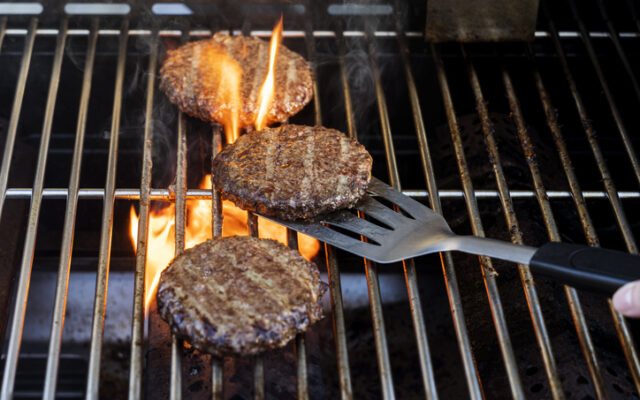Home Cooking Mistakes That Make Food Safety Experts Cringe
September 22, 2023 6:39PM CDT

Burgers cooking on barbecue grill
We always hear about E.coli or salmonella outbreaks in the food supply, as they often lead to recalls to keep more people from getting sick. But that same bacteria can also show up in your kitchen at home. According to the CDC, around 48-million Americans get foodborne illnesses every year and 128-thousand end up in the hospital.
It turns out, some of the prep and cooking techniques we use could help the spread of bacteria and you could end up with food poisoning from your own kitchen. To avoid that, food safety experts are sharing the preparation and cooking methods that aren’t food safe and what to do instead.
- Not washing your hands – It should be the first thing you do in the kitchen and something you do frequently, and thoroughly, while prepping and cooking to reduce the risk of cross-contamination.
- Mishandling cutting boards – If you’re slicing raw chicken or fish on a cutting board, it needs to be washed in hot water with soap before using it to chop veggies. Same goes for knives.
- Using the same plate or utensils for raw and cooked meat – When you take a steak or burgers out to the grill, don’t put them back on that same plate when they’re cooked. And use different tongs, or wash them between using them on raw and cooked meat.
- Washing raw chicken – Some people think this is a necessary step, but they’re wrong. The meat is sold ready to cook and washing it is really just a good way to spread bacteria and pathogens in the sink and beyond.
- Thawing meat on the counter – As the meat warms up on the counter, the harmful bacteria in and on the food can grow. The best ways to defrost meat are in the fridge, under cold running water or in the microwave ONLY if the meat is cooked right after thawing.
- Cooking raw food in the microwave – Since foods don’t cook evenly in the microwave, this can be dangerous as all of the food might not reach the correct internal temperature to ensure harmful bacteria are killed as it cooks.
- Putting warm food in the fridge to cool – Food needs to cool down before you put it in the fridge. If it’s at the “danger zone” temperature range of 41 to 135-degrees for an extended time, it can lead to bacteria growth. You can cool it in metal containers over ice first or cut it into smaller pieces to help it cool faster.
Source: Huff Post
More about:



